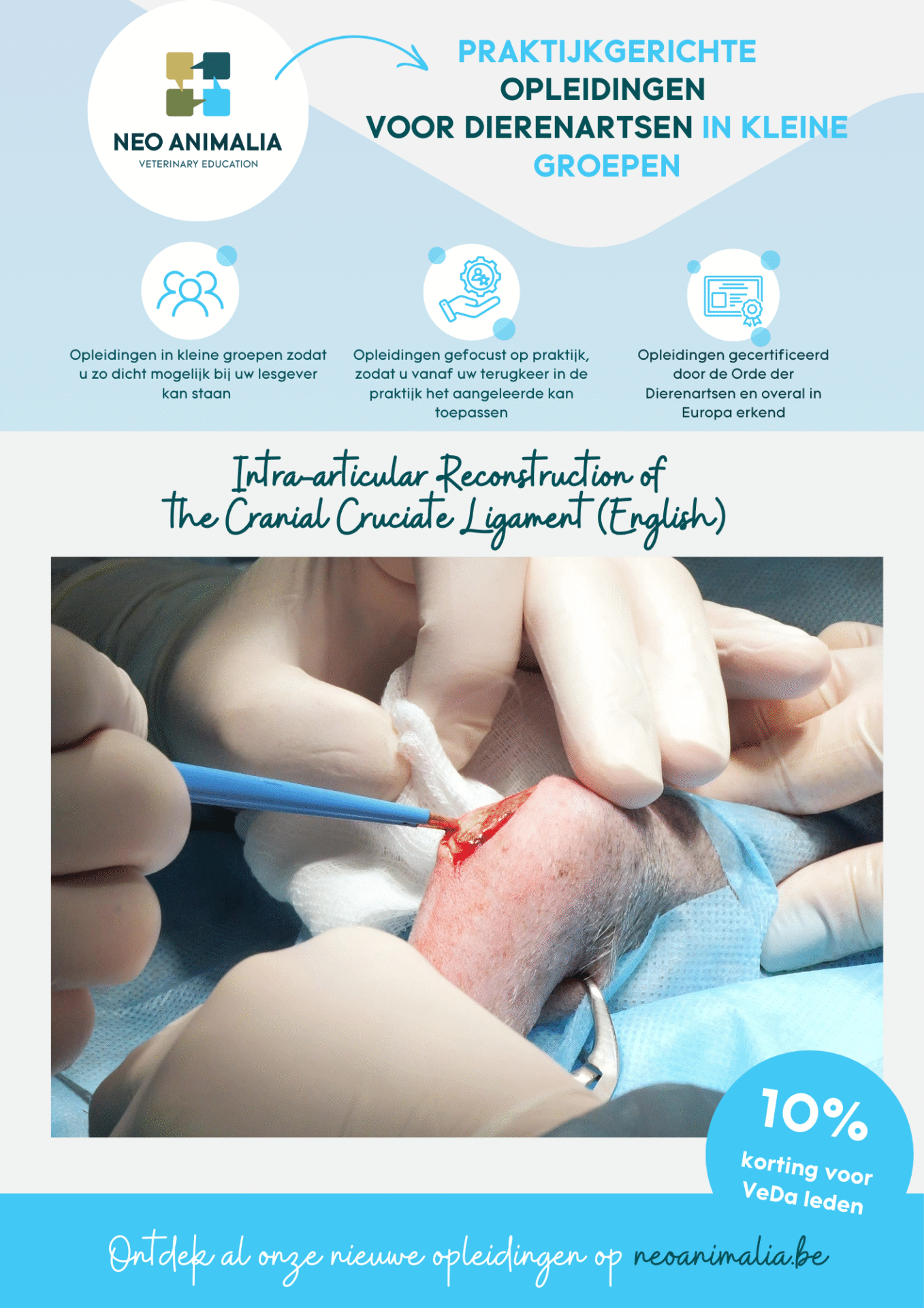Intra-articular Reconstruction of the Cranial Cruciate Ligament (English)
• Locatie : Louvain-La-Neuve
• Datum : Zaterdag 27/09/2025
• Schema : 9u00 – 17u30
• Trainingspunten : 11 – 14 PFCC
Als VeDa-lid krijg je 10% korting op Neo Animalia-opleidingen. Om hiervan te profiteren, moet je eerst contact opnemen met het secretariaat info@neoanimalia.be om de korting aan te vragen VOORDAT u zich inschrijft voor de cursus van uw keuze. Terugbetalingen nadien kunnen niet
gegarandeerd worden.
Dr Geoffrey Pagès – Dr Nadège Chailleux
The rupture of the cranial cruciate ligament (CCL) is one of the most common knee conditions in dogs. Managing this pathology requires an adapted surgical approach. Among the available solutions, the use of a synthetic ligament stands out as an effective alternative method that can address the specific needs of the animal.
Why Choose a Synthetic Ligament?
Unlike approaches using autografts or allografts, which require time to remodel and revascularize, synthetic ligaments offer immediate functionality. This rapid action is crucial for the quick rehabilitation of the dog, thus avoiding prolonged immobilization periods, which are critical to its well-being.
Synthetic fibers are designed to integrate seamlessly with the surrounding soft tissues, restoring the original biomechanical conditions of the knee. Furthermore, these ligaments more closely replicate the natural movements of the joint compared to indirect techniques such as TPLO (Tibial Plateau Leveling Osteotomy) or TTA (Tibial Tuberosity Advancement), which permanently alter the biomechanics of the knee.
Advantages of Synthetic Ligaments:
- Immediate functionality: Unlike biological grafts, synthetic ligaments are operational as soon as they are implanted, reducing recovery time.
- Biocompatibility with soft tissues: These fibers optimally adapt to joint structures, promoting natural and sustainable rehabilitation.
- Optimal biomechanical restoration: The joint conditions are faithfully recreated, avoiding functional compromises associated with other surgical techniques.
- Immediate mobility: Synthetic ligaments allow the dog to regain mobility right after surgery, without compromising the stability of the joint or creating irreversible situations.
The use of a synthetic ligament provides an effective and durable solution for treating cranial cruciate ligament ruptures in dogs.
- Throughout this course, the two independent instructors will share their experiences and practical viewpoints on this innovative technique.
- Practical sessions will allow participants to practice under the close supervision of the instructors to ensure the effective learning of the technique.
By the end of the course, veterinarians will be able to master intra-articular reconstruction techniques using free-fiber synthetic ligaments, ensuring optimal management of ligament injuries.
Meer informatie op neoanimalia.be
